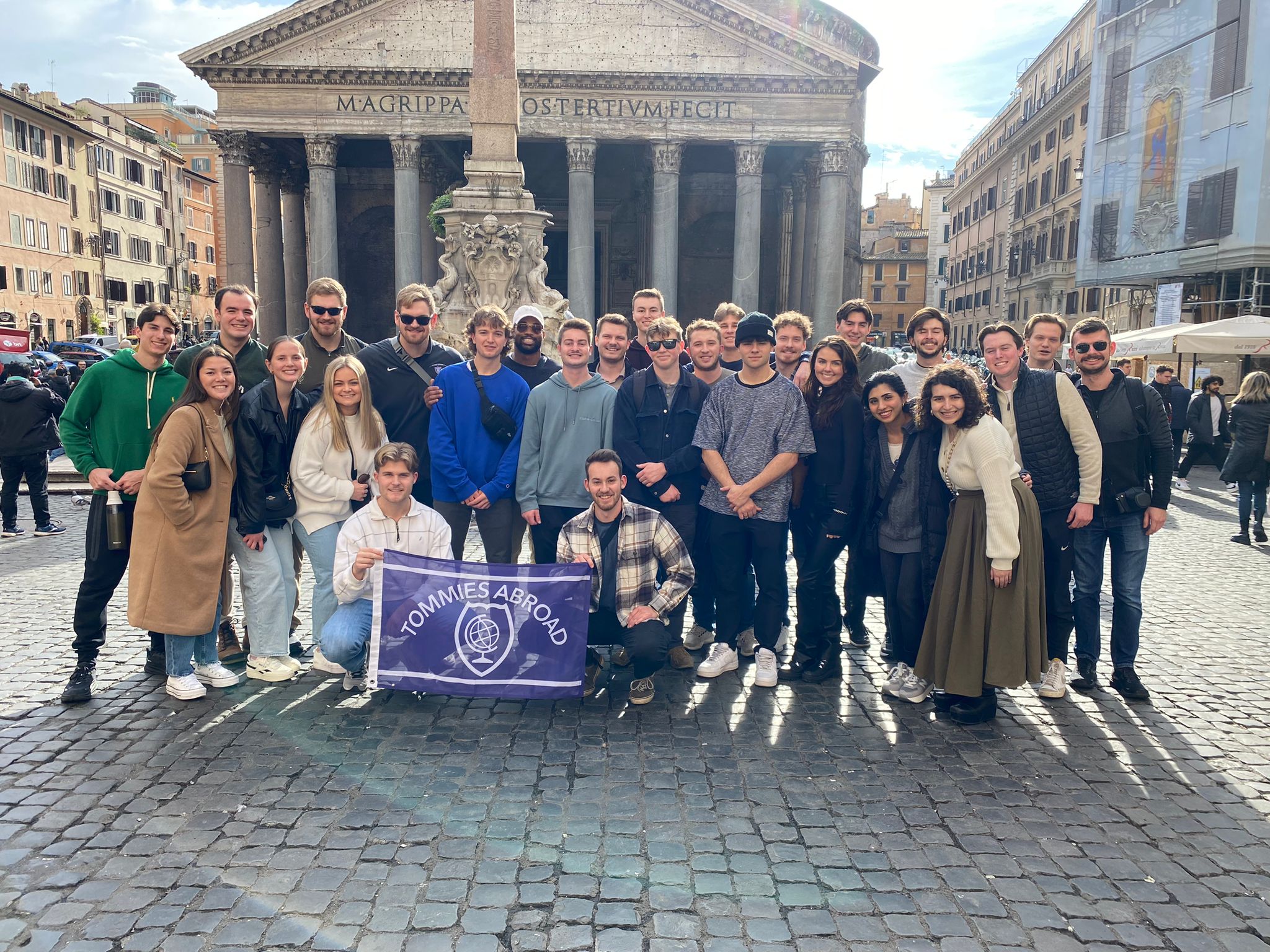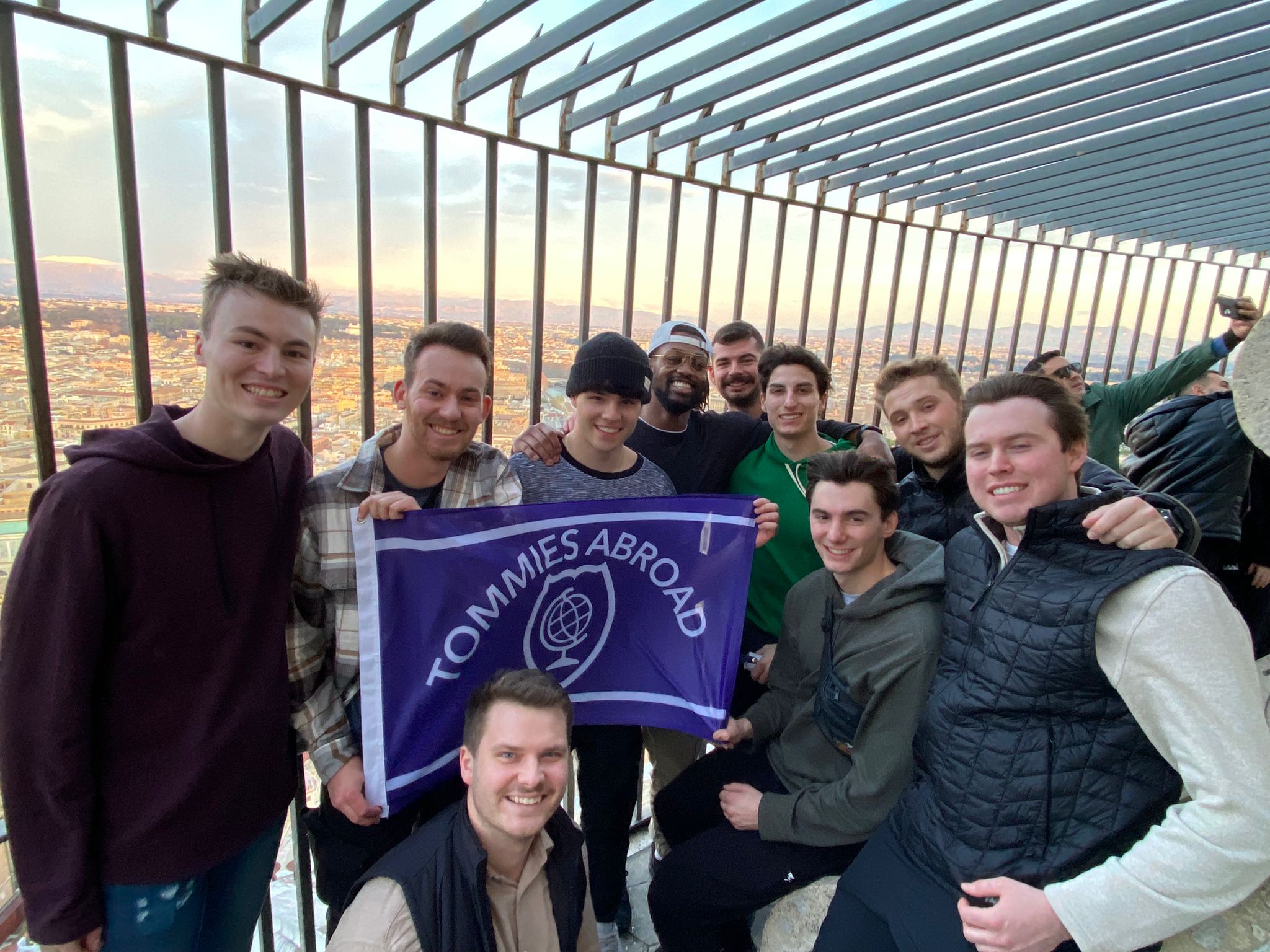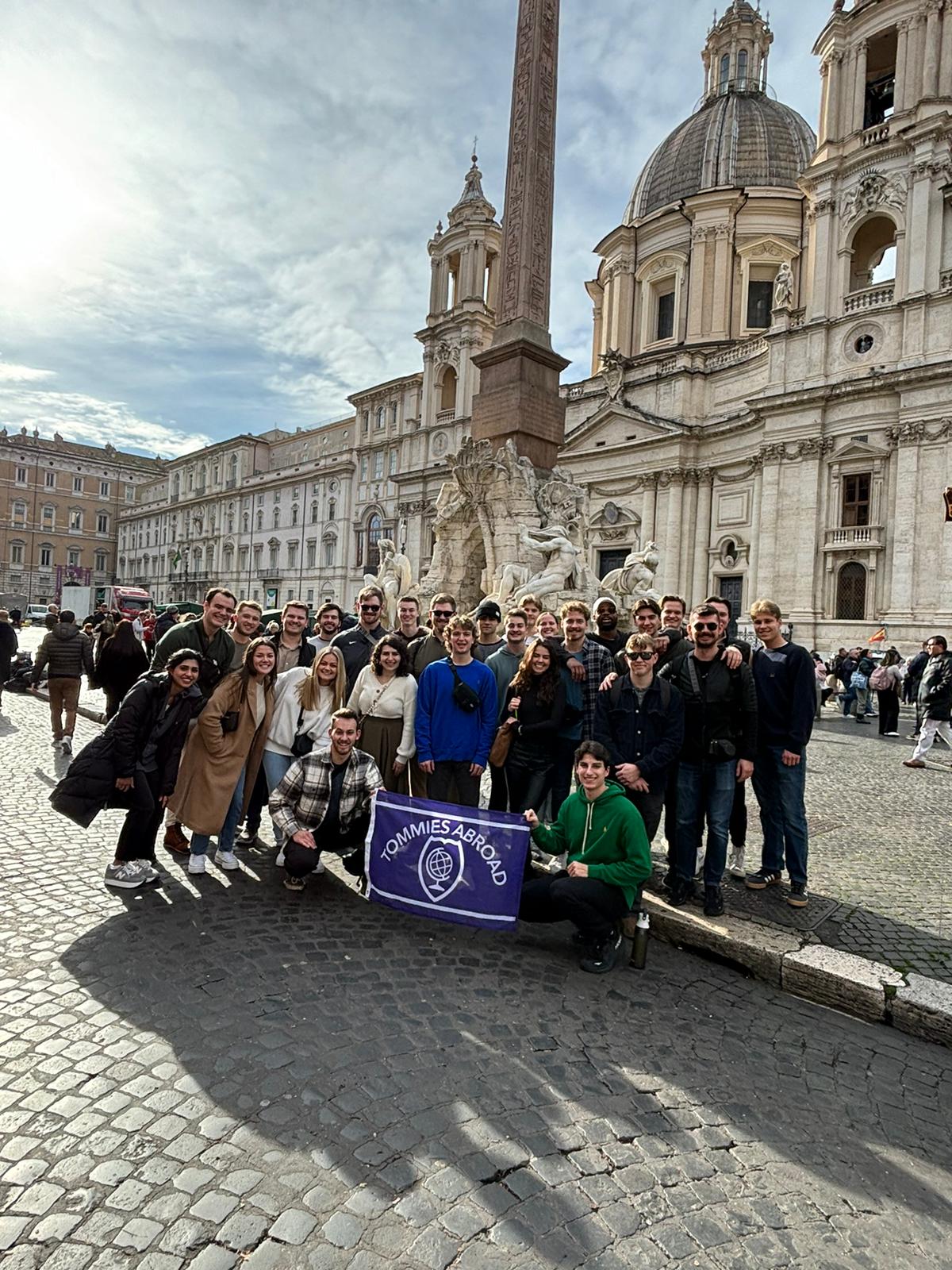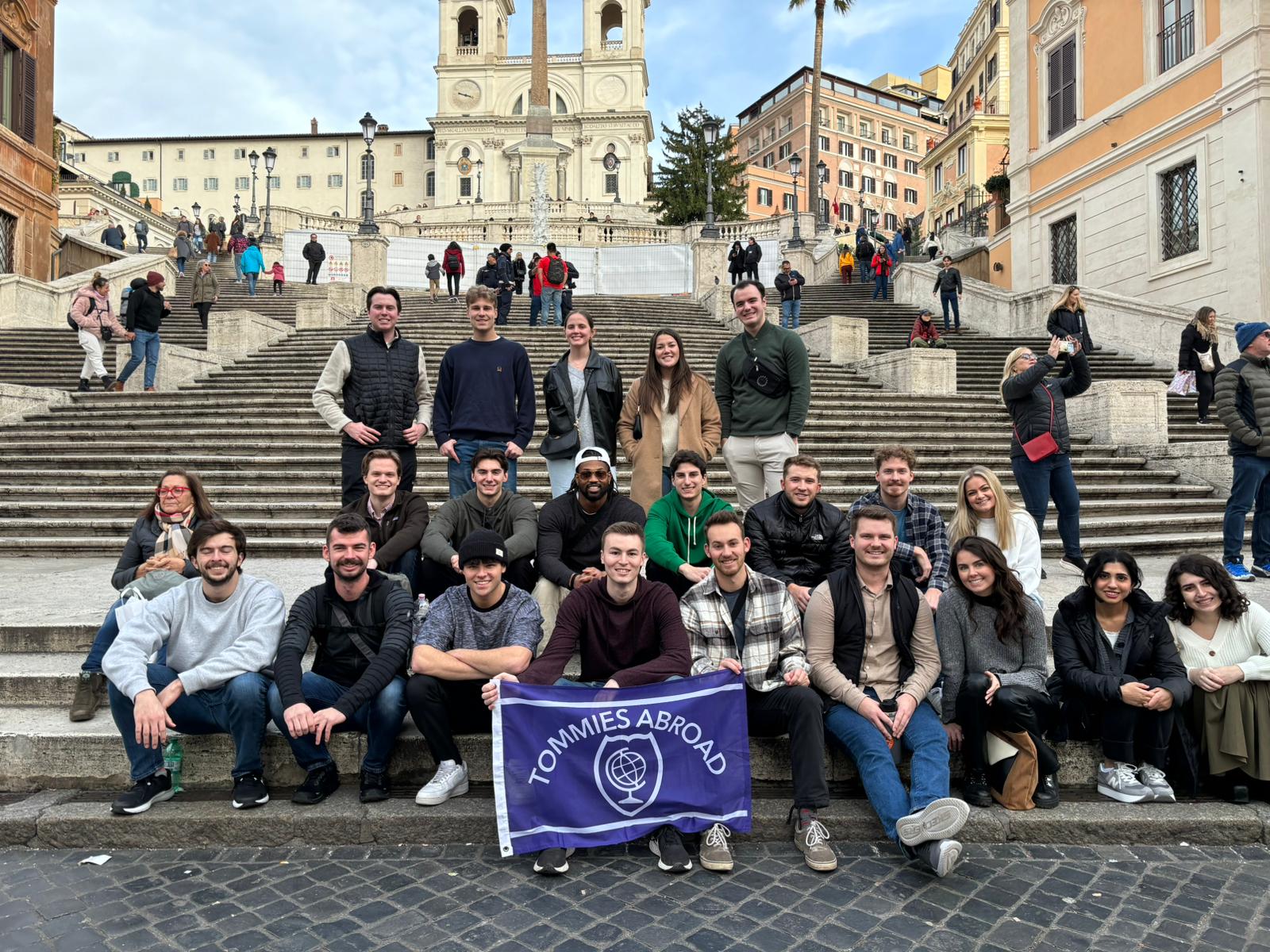Today was our class’s first full day in Rome and it all started with an incredible breakfast served on the top floor of our hotel. Immediately after breakfast we began our first classroom session where we studied the fundamentals of architecture and engineering presented by Vitruvius in his book “De architectura”. These fundamentals include the idea of three main principles being necessary for any building, those principles include firmitas, utilitas, and venustas which mean “strength”, “utility”, and “beauty”. Vitruvius states that for a building to be sound, it must balance all three of these principles well. We had a short break that was then followed by a walk over to the Pantheon, the biggest unsupported dome in the world. In here we connected the location to the engineering ideas of using compression to support structures that is seen in domes and arches alike. The pantheon balances all of Vitruvious’ principles extremely well which is why it has been preserved for so long. At the Pantheon, Dean Weinkauf and Professor Besser informed the class about the remarkable construction of the ancient building. Understanding the reasons why the dome has greatly outlasted its engineers is a key component to the class and will ultimately produce engineers who are well-rounded in engineering knowledge and history.
This ended the mandatory part of our day, but the class elected to continue our adventures by going on to see the Trevi Fountain, the Spanish Steps, and Saint Peter’s Basilica. The Trevi Fountain was a great place for the class to stop and toss coins. The fountain is made of travertine stone, likely from the city of Tivoli, which is 22 miles away. The class then visited the Spanish Steps. At the top of the many steps, there is one of 13 obelisks in Rome. The obelisks were taken from Egypt throughout the first century BC. Finally, many of us made it to St. Peter’s Basilica. We raced up the 535 steps to catch the sunset. This was a great conclusion to our adventures as a class.




No Comments